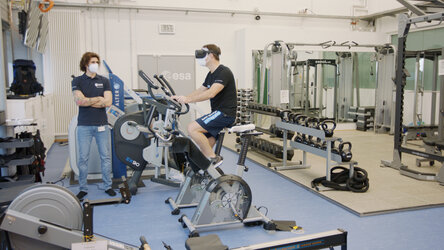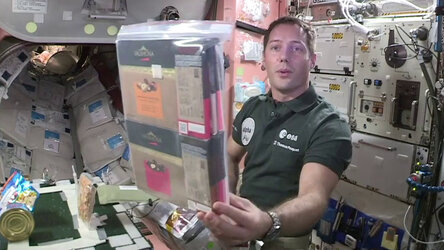Accept all cookies Accept only essential cookies See our Cookie Notice

About ESA
The European Space Agency (ESA) is Europe’s gateway to space. Its mission is to shape the development of Europe’s space capability and ensure that investment in space continues to deliver benefits to the citizens of Europe and the world.
Highlights
ESA - United space in Europe
This is ESA ESA facts Member States & Cooperating States Funding Director General Top management For Member State Delegations European vision European Space Policy ESA & EU Responsibility & Sustainability Annual Report Calendar of meetings Corporate newsEstablishments & sites
ESA Headquarters ESA ESTEC ESA ESOC ESA ESRIN ESA EAC ESA ESAC Europe's Spaceport ESA ESEC ESA ECSAT Brussels Office Washington OfficeWorking with ESA
Business with ESA ESA Commercialisation Gateway Law at ESA Careers Cyber resilience at ESA IT at ESA Newsroom Partnerships Merchandising Licence Education Open Space Innovation Platform Integrity and Reporting Administrative Tribunal Health and SafetyMore about ESA
History ESA Historical Archives Exhibitions Publications Art & Culture ESA Merchandise Kids Diversity ESA Brand Centre ESA ChampionsLatest
Space in Member States
Find out more about space activities in our 23 Member States, and understand how ESA works together with their national agencies, institutions and organisations.
Science & Exploration
Exploring our Solar System and unlocking the secrets of the Universe
Go to topicAstronauts
Missions
Juice Euclid Webb Solar Orbiter BepiColombo Gaia ExoMars Cheops Exoplanet missions More missionsActivities
International Space Station Orion service module Gateway Concordia Caves & Pangaea BenefitsLatest
Space Safety
Protecting life and infrastructure on Earth and in orbit
Go to topicAsteroids
Asteroids and Planetary Defence Asteroid danger explained Flyeye telescope: asteroid detection Hera mission: asteroid deflection Near-Earth Object Coordination CentreSpace junk
About space debris Space debris by the numbers Space Environment Report In space refuelling, refurbishing and removingSafety from space
Clean Space ecodesign Zero Debris Technologies Space for Earth Supporting Sustainable DevelopmentLatest
Applications
Using space to benefit citizens and meet future challenges on Earth
Go to topicObserving the Earth
Observing the Earth Future EO Copernicus Meteorology Space for our climate Satellite missionsCommercialisation
ESA Commercialisation Gateway Open Space Innovation Platform Business Incubation ESA Space SolutionsLatest
Enabling & Support
Making space accessible and developing the technologies for the future
Go to topicBuilding missions
Space Engineering and Technology Test centre Laboratories Concurrent Design Facility Preparing for the future Shaping the Future Discovery and Preparation Advanced Concepts TeamSpace transportation
Space Transportation Ariane Vega Space Rider Future space transportation Boost! Europe's Spaceport Launches from Europe's Spaceport from 2012Latest

Flat out training
Thank you for liking
You have already liked this page, you can only like it once!
French ESA astronaut Thomas Pesquet re-familiarises himself with the Grasp experiment at the European Astronaut Centre in Cologne, Germany. Thomas will continue running this experiment during his second mission on board the International Space Station.
Thomas commissioned the Grasp or Gravitational References for Sensimotor Performance experiment during his first mission to the Space Station, called Proxima, in 2017.
The experiment tests how the brain interprets visual cues without gravity. Using a VR headset, the subject must complete a series of tasks like catching a ball or pouring a glass of water. The astronaut subject is held in place by straps to avoid bumping into expensive or critical equipment while performing the experiment.
“It was a bit disconcerting,” Thomas noted of the first time he performed the experiment on the Space Station, “but very fun to be in the Space Station which is already out-of-this-world while also being in another (virtual) reality.”
Watch a timelapse of Thomas setting up and performing the experiment in weightlessness here.
Thomas will perform this experiment again during his second mission, called Alpha, scheduled for launch in spring 2021. Read more about mission Alpha and the first European to travel to the Space Station on a SpaceX Crew Dragon here.
Astronaut training is more than just space suit-ups and spacewalk simulations in a big pool. They must also become familiar with experiment hardware and laboratory equipment they will use while performing scientific experiments on board the International Space Station.
All astronauts from ESA and international partners who fly to the International Space Station spend time at ESA's Astronaut Centre in Cologne, Germany, where ESA instructors train them in the operation of all major European hardware on board the International Space Station, including the Columbus laboratory.
-
CREDIT
ESA-D. Ham -
LICENCE
ESA Standard Licence

Immersive Exercise training with Thomas Pesquet

Mission Alpha space food

ESA astronaut Thomas Pesquet training for the Alpha…

Space Olympics: lack-of-floor routine















 Germany
Germany
 Austria
Austria
 Belgium
Belgium
 Denmark
Denmark
 Spain
Spain
 Estonia
Estonia
 Finland
Finland
 France
France
 Greece
Greece
 Hungary
Hungary
 Ireland
Ireland
 Italy
Italy
 Luxembourg
Luxembourg
 Norway
Norway
 The Netherlands
The Netherlands
 Poland
Poland
 Portugal
Portugal
 Czechia
Czechia
 Romania
Romania
 United Kingdom
United Kingdom
 Slovenia
Slovenia
 Sweden
Sweden
 Switzerland
Switzerland
























